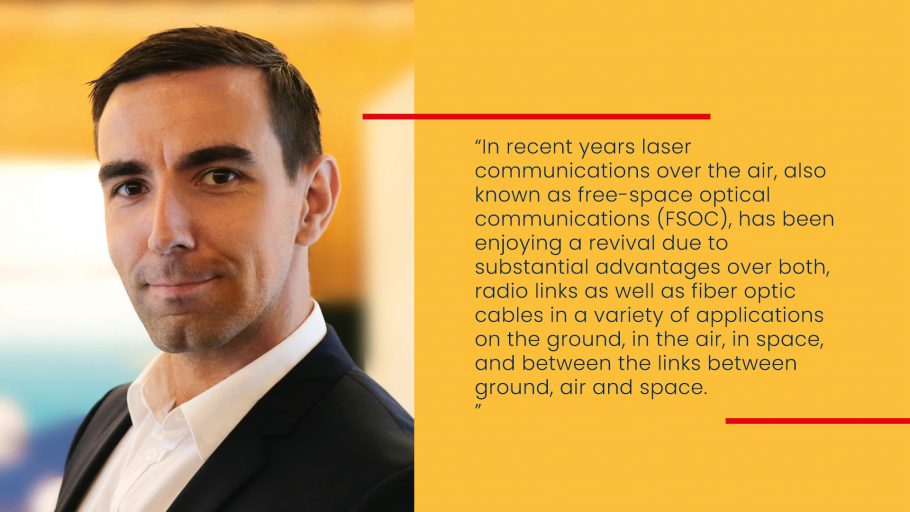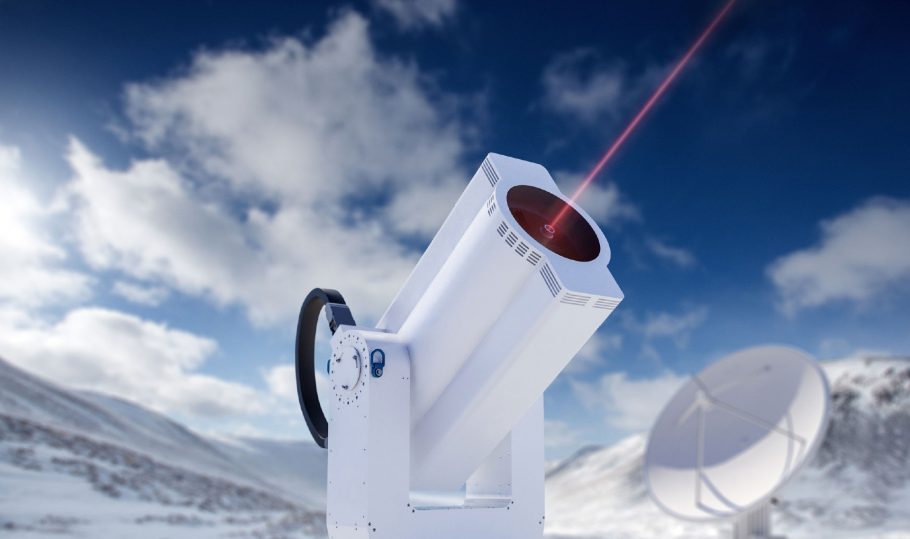Shortly after the invention of the laser in 1960, scientists identified telecommunications as a key application for this breakthrough discovery. In an experiment at Bell Labs in 1963, a helium-neon laser was coupled with an acousto-optic modulator enabling voice calls to be carried over a laser beam. Two years later at the same laboratory, two lasers were phased-locked for the first time. This formed the basis for high data rates through phase and amplitude modulation as used in fiber today.
All these early experiments used air as a transmission channel for the laser beam. Air, however, suffers from serious physical constraints set by the laws of light propagation. Laser communications require a clear line-of-sight between transmitter and receiver, because the narrow beams require both terminals to be aligned precisely, and links quickly degrade and eventually fail in poor atmospheric conditions.
In parallel to the foundational research on lasers between the mid-1960s and late 1970s, fiber optics, developed from concept to maturity, allowed the transmission of light through meandering fiber cables over long distances. Hence, the physical constraints of laser communications over the air were removed and the focus of research and development quickly shifted to fiber-based optical communications.
In recent years laser communications over the air, also known as free-space optical communications (FSOC), has been enjoying a revival due to substantial advantages over both, radio links as well as fiber optic cables in a variety of applications on the ground, in the air, in space, and between the links between ground, air and space.
Radio communications are rapidly approaching the Shannon limit, leaving no room for dramatic improvements in performance, and the available amount of frequency spectrum has been virtually exhausted resulting in competition between stakeholders and often exorbitant spectrum fees. Higher rates of frequency reuse and frequency sharing increase harmful interference and most radio links are also easy to intercept and jam.
In contrast, FSOC can achieve at least multi-Gbps up to multi-Tbps data rates, thanks to the extremely wide optical spectrum used in fiber. Because of the narrow laser beams there is no risk of interference, and consequently, no need for allocation or coordination, which is why FSOC has remained unregulated and unlicensed. Jamming and interception are close to impossible and laser terminals can be as small as a shoebox, while consuming significantly less power than an RF link with similar performance.
While the laying of fiber requires contracting, permits, and weeks if not months of installation work, laser links can be set up within minutes at a fraction of the cost of fiber and encounter way less bureaucracy. Lastly, latency is reduced as light travels about a third slower over fiber than through the atmosphere or in space. Due to its advantages over traditional technologies, the ever-increasing bandwidth demand and growing communication security concerns, governments and enterprises are putting great efforts into the commercialization and large-scale deployment of FSOC.

DEVELOPMENTS IN FREE SPACE OPTICAL COMMUNICATIONS
Singapore-based startup Transcelestial has developed a shoebox-sized laser terminal capable of connecting any two points in line-of-sight with speeds up to 10 Gbps over a distance of up to 10km [6.2 miles].
Facebook has long been interested in FSOC. Initially the company tested laser links as part of its Aquila drone program, which has been replaced by a satellite project called Athena. Launched in September 2020, the Athena satellite is trialing laser links to optical ground stations at the Mount Wilson and the Stony Ridge Observatories, near Los Angeles, paving the way for optical gateway links for large broadband constellations.

